So you show up at work one day, and your supervisor tells you that instead of your normal duties you’re going to be working a protection detail at a fellow officer’s home. Okay, you say, but why?
And your supervisor tells you that they’ve identified a suspect in a double murder, the one down in Irvine that everyone’s been talking about, the one where the daughter of a retired LAPD captain and her fiancé were shot to death while sitting in a car. And he goes on to tell you that the suspect is a former LAPD cop who was fired a few years ago, and that he had put some kind of twisted manifesto on his Facebook page saying he had declared war on the LAPD and would hunt down and kill everyone he held responsible for his getting canned from the job. And their families.
And you say, “What?”
Then you get a copy of this guy’s manifesto, and the first thing you do is skim through it looking for your name. And though you’re relieved not to find yourself listed among the killer’s targets, there are people you know on the list and you wonder if all of these protection details the LAPD is scrambling to put together will be in place before the guy strikes again. And you think, the guy blames the retired captain (among many others) for his getting fired, so he goes out and kills his daughter? And her fiancé? What the hell is wrong with this guy?
Plenty, as you come to learn, for as you read more deeply into his manifesto you realize he’s put a lot of thought into it — a lot of pretty tangled thought, but a lot of thought nonetheless — and he says he’s got all kinds of guns and military gear and knows how to use them and not get caught.
Then your cell phone starts ringing. It’s people you work with or used to work with, and they have questions. Have you seen the manifesto? Can you believe so-and-so is on the list? Can you believe the guy is willing to kill family members over this? And then you talk to a coworker who tells you that a friend of his is on the list, and your coworker says it was he who informed his friend to arm up and hunker down more than an hour before anyone from the department got around to officially warning him.
Then they tell you the cop you’ll be protecting is someone you used to work with, and you and the rest of your detail drive 30 or 40 miles to his house out in the suburbs and get set up. A few guys in tight on the house, a few others farther out, a few others even farther out. Every car that comes through the neighborhood has to be checked out. You want to knock on the door of the house you’re guarding and ask how your former coworker is doing but you don’t want to bother him and his family, because God knows how they must be feeling. But then he needs to go out for some groceries, so you arrange to put him in an unmarked car with some cops in plain clothes, so at least he can go and get what he needs without making a big scene at the supermarket.
And when he gets back from the grocery run you talk to him for a minute in front of the house and ask him how he’s doing. Okay, he says, but it’s hard on the family. And even though he tries not to act worried — because, you know, we’re cops and we never want to act worried around other cops — even though he tries to act like he isn’t worried you can see that he is and you can see that he hasn’t slept much and you can only imagine how his wife is doing and how he explains all of this to his kids, who can’t go to school or the playground or even out in their own yard.
So you tell him you’ve got his back, that you and the rest of the detail have the neighborhood covered. And he thanks you and goes back in the house, but you know he’s wondering: If the killer shows up here, are you going to be able to stop him? And you wonder the same thing, because even though you and the rest of the cops on your detail are armed to the teeth with every weapon the LAPD allows you to have (and maybe one or two it doesn’t), you know the killer you’re looking for has some formidable weapons of his own, including, if the reports are true, a .50 caliber sniper rifle, the bullet from which would go right through your ballistic vest and your car and probably a house or two before it stopped.
Then you learn that the guy you’re looking for is driving a gray Nissan Titan pickup truck, which you Google on your cell phone so you know what the damn thing looks like, and the truth is that it looks pretty much like a lot of pickup trucks. And later on you learn that the guy shot at two LAPD cops out in Corona, which is even farther from L.A. than where you are. Those cops were out there doing the same thing you’re doing, which is guarding someone on the killer’s list. And you’re happy when you hear that even though their black-and-white got thrashed with rifle rounds, the cops themselves weren’t badly hurt.
But then a little later you learn that out in Riverside, which is near Corona, two cops were ambushed while sitting at a traffic light, and one of those cops was killed and the other one may not make it either. And they tell you they don’t know where the killer went. And now, if you weren’t nervous before, you are now. And you check your guns and your ammunition and you go back over your plan for the fifth or sixth or tenth time with the rest of your team.
Then you hear that the killer may have been seen near the airport, which is pretty far from where you are, but then it’s pretty far from Riverside, too, and at that time of the early morning there’s nowhere in Southern California you can’t get to pretty quickly by freeway.
And then comes the “officer-needs-help” call from some Hollywood Division cops who are guarding someone in Torrance. A pickup truck was coming down the street with its lights off, right toward the house being guarded. And you think, great, maybe they got him, maybe we can all go home now. But then, terrible news: they shot up two women delivering newspapers. And you think, thank God it was them and not me, because you’ve had your front sight on quite a few cars since this whole thing started.
When you go home, you tell your wife what’s been going on, and she asks you lots of questions that you can’t answer because, well, how can you explain all of this? And you tell her not to worry because you’re not on the killer’s list and as far as you know you’ve never even seen the guy. And she says she’s not worried and you say you’re not worried, but you know she is and she knows you are. And a little later you’re sitting alone in your kitchen when a shadow comes across a window, and you think, what the hell was that? Then you realize it was just the wind blowing a tree branch, but you don’t tell your wife how scared you just were until she tells you that while you were at work the dog started barking at something or someone out in the yard, and she thought she might have heard the side gate to the house opening but when she looked out the window there was no one there. But what was the dog barking at?
The next day you go back to work and your protection detail, and you hear they’ve found the killer’s truck up near Big Bear — which is a long way from where you are — and they’re searching for him now, so far without success. And you think, why would he set his truck on fire if he didn’t want to draw attention to it? So you think he had another car stashed up in the mountains, and he’s still out there on the loose but now no one knows what he’s driving, so from now on every car that comes down the street is a potential threat. And by now all of the neighbors know why you’re there, and some of them stop and talk to you and tell you that you can use their bathroom if you need to, and some of them even bring you food, which makes you feel a little guilty, because last night you had a gun pointed at their car when they came down the street and pulled into their driveway. But you don’t tell them about that.
And then an unfamiliar car comes through the neighborhood, one with tinted windows so no one can see the driver, and it passes right by the house you’re guarding and slows down a bit but keeps going. “We need to ID the driver,” someone says over the radio, so you go after the car until you can get close to it and try to get a look inside. And you pull up next to it at a traffic light and try to see inside but the tinted windows make it hard. And you realize that if it is the killer, you might not know who he is but he sure knows who you are. And if it’s him, he’s got a gun pointed at you right now, and the last thing you’re going to see is that tinted window breaking when the bullet comes out heading right at . . . you.
Then you hear about an officer-involved shooting way down in Temecula, about a hundred miles from L.A., and again you think they got him, but a little later you find out it had nothing to do with the guy you’re looking for. And you remember that all the ordinary trouble and strife is still happening out there; the killer is not the only bad guy on the loose, only the worst of them.
But then comes other news: the killer stole a car up near Big Bear, or maybe it was a truck. The cops are chasing him. No, now they don’t know where he is, but he’s driving a white pickup truck. And you calculate how long it would take to drive from Big Bear to where you are, and God help the next person who comes down the street in a white pickup truck.
And then on the news radio stations the reports start coming in: they’ve found him. He’s surrounded in a cabin near Big Bear. There’s been more shooting. Two sheriff’s deputies have been hit. They’ve been flown to a hospital. And a little later you learn that one of them has died and now that’s four people dead, four people who never knew the killer, never met him, never even saw him before in their lives. And he thinks he got a raw deal.
Then, as night begins to fall, you hear the reports of the cabin going up in flames, and you think, well, if that’s what it takes. But even as the cabin is reduced to ashes there are rumors that the killer has escaped. He stole a police car and made it down the mountain. Or it wasn’t even him up there in the first place. And it seems like the fourth act in some horror movie where everyone thinks the monster is dead but he really isn’t and he kills a few more people before the good guys win and the credits roll and the lights come on.
They tell you the protection details will continue, because maybe, just maybe, the killer wasn’t caught in that fire after all. And then you’re replaced by the next shift, and as you drive home you listen to the news hoping someone is going to say it’s all over. But they won’t say it, not yet. Not until they find a body in there, and even then not until they identify it. When you get home, even though you haven’t had much sleep lately you can’t help but watch the news, and you learn that, yes, they did find a body but, no, they don’t know who it is because it’s been burned so badly. But then you hear they found a wallet with the killer’s driver’s license in it, so even though there’s no positive identification through DNA or dental records yet, you can go back to your regular duties because, finally, it’s all over.
All over that is, but for the antics of the odd band of people who profess support for the killer, who are getting organized on Facebook and staging protests at the LAPD headquarters building and asking questions like, “Why couldn’t we hear [the killer’s] side?” To which you want to answer, Maybe we’ve heard just about enough of his side.
And when you think it can’t get any worse there’s the inane commentary on television, like from the guy on CNN, some moral midget with a PhD, who talks about how “exciting” it all was and how the killer was some kind of “superhero.” And you think, “What?” And you wonder how much more of a superhero the killer might have been if he had murdered ten people. A hundred?
And maybe that’s something to shoot for, if you’ll pardon the expression, for the next guy looking for a novel way to have his grievances aired. Won’t that be exciting?
(Thumbnail on PJM homepage assembled from multiple Shutterstock.com images.)



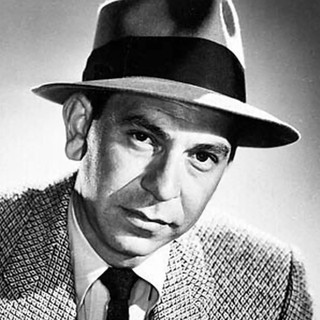
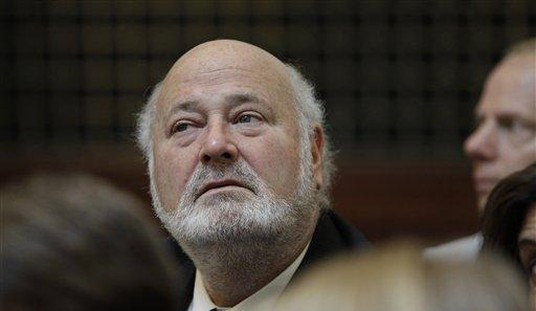
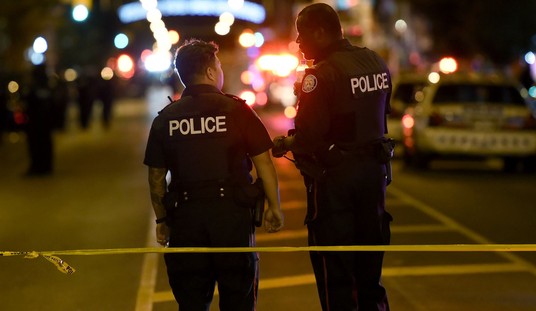


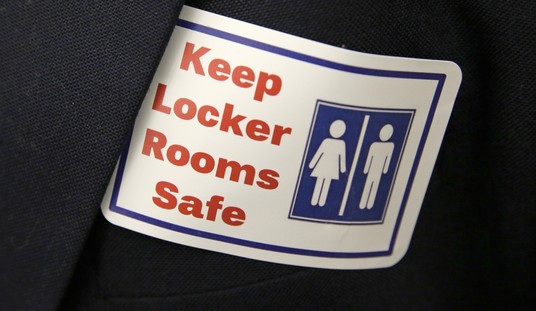
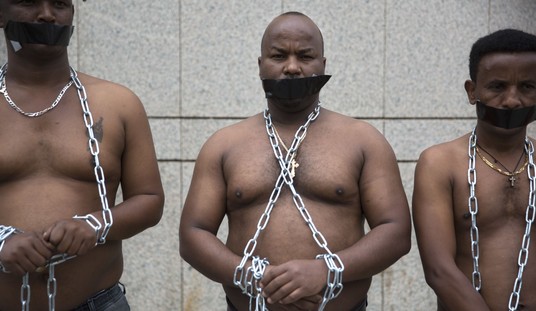
Join the conversation as a VIP Member